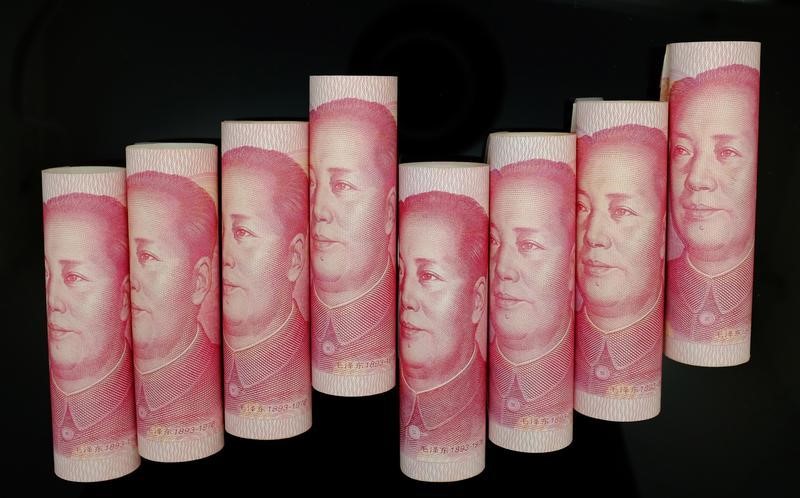By Kevin Yao and Meng Meng
BEIJING (Reuters) - China's factory output growth hit a 7-month low in October while investment expansion slipped to its weakest pace since 2000, signs that further government policy support may be needed to shore up slowing demand in the world's second biggest economy.
The one bright spot in tepid October data released Wednesday was an improvement in retail sales, which appear to be keeping the growth rate of the world's second-largest economy from sliding.
Chinese leaders have embarked on the most aggressive policy easing since the 2008/09 global financial crisis, but the October numbers highlight persistent headwinds from weak global demand, a cooling domestic property sector and excess factory capacity.
"Fiscal policy is likely to become more expansionary next year," said Lin Hu, an economist at Guosen Securities in Beijing. "There will be more interest rate and RRR (reserve requirement ratio) cuts and we cannot rule out the possibility of such cuts within the year."
Factory output grew slower-than-expected at an annual 5.6 percent in October, the weakest in seven months, National Bureau of Statistics data showed. That was below a Reuters forecast of 5.8 percent and down on September's 5.7 percent.
Fixed asset investment rose 10.2 percent in the first 10 months, in line with expectations but the weakest pace since 2000 and easing from a 10.3 percent gain in the January-September period.
The cooling real estate sector remained a drag on investment, with property investment growth slowing to 2.0 percent in January-October from 2.6 percent in the first nine months.
Retail sales growth continued to pick up, expanding at an annual 11.0 percent in October, compared with 10.9 percent in September. Analysts had forecast 10.9 percent growth in October.
Helping lift retail sales were buoyant vehicle purchases, which rose 11.8 percent from a year earlier in October, the biggest on-year gain since December, according to the China Association of Automobile Manufacturers.
Last week, General Motors Co (N:GM). said China vehicle sales rose 15 percent to a record high in October.
And on Wednesday, e-commerce giant Alibaba (N:BABA) reported sales from the Singles' Day online shopping extravaganza had already surpassed last year's total of $9.3 billion, a sign consumer sentiment remains firm in the fourth quarter. [L3N1362AR]
Most analysts put more weight on indicators showing persistent problems than on green-shoots.
Zhou Hao, senior emerging markets economist at Commerzbank (DE:CBKG) in Singapore, said the data is not encouraging, despite some stabilisation, with manufacturing slowing and demand sluggish.
"Property investment remained low, which has failed to turn around the momentum of overall investment," Zhou said.
"While consumption outperformed somewhat, the overall growth profile still remains weak."
POLICY SUPPORT STILL NEEDED
Wednesday's patchy activity data came on the heels of muted inflation and disappointing trade figures.
On Oct. 23, China's central bank cut interest rates for the sixth time in less than a year, alongside a cut in bank reserve requirements, after third quarter annual economic growth slowed to 6.9 percent - the weakest since the global financial crisis.
Premier Li Keqiang's pledged on Tuesday that the government will maintain policy support for the economy as it faces headwinds caused by a sluggish world economy and domestic structural adjustments.
President Xi Jinping has said that China must keep annual average growth of no less than 6.5 percent over the next five years to hit the country's goal of doubling 2010 gross domestic product and per capita income by 2020.

"With policymakers keen to meet their growth targets and having policy space to do so, we think the probability of a hard landing remains low, notwithstanding the need for structural reforms," said Louis Kuijs, head of Asia economics at Oxford Economics.